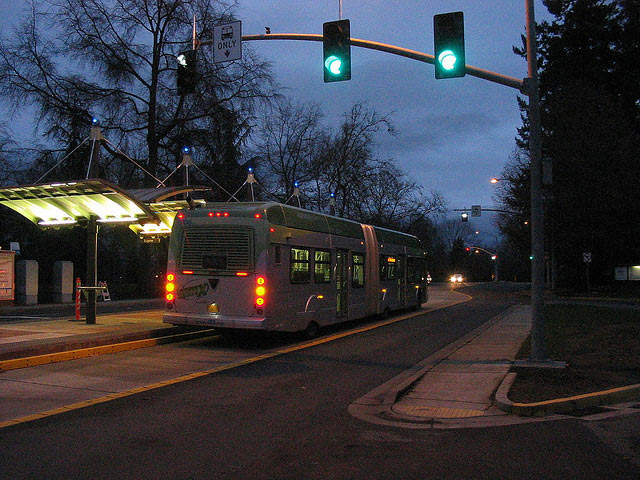Bus Rapid Transit Is Focus For Chicago Architectural Club's Burnham Prize Competition
By Chuck Sudo in News on Apr 2, 2013 7:30PM
Let’s face it: Bus Rapid Transit is going to expand in Chicago beyond the Jeffrey Jump. Plans are already in place for a BRT project in the Central Loop district to connect Union Station, Navy Pier and the Ogilvie Transportation Center, and BRT projects are planned for Western and Ashland Avenues.
Bus Rapid Transit is the focus of the 2013 Burnham Prize competition, sponsored by the Chicago Architectural Club and the Chicago Architecture Foundation. "NEXT STOP - Designing Chicago BRT Stations" aims to find innovative designs to seamlessly integrate BRT station designs into existing Chicago architecture and street layouts at three planned intersections: 18th Street and Ashland Avenue; State and Madison Streets; and on Western Avenue at the O’Hare Blue Line Stop in Logan Square.
CAF and the Chicago Architectural Club are working with the Chicago Department of Transportation, the Chicago Transit Authority and a coalition of groups called the Chicago Bus Rapid Transit Steering Committee that includes the Metropolitan Planning Council, Active Transportation Alliance, Urban Land Institute, Civic Consulting Alliance and the Institute for transportation and Development Policy (in addition to CTA and CDOT) to find the best designs for Chicago’s BRT projects to succeed. Active Transportation Alliance director of campaigns Lee Crandell told Chicagoist the planned stations “are a critical element of Bus Rapid Transit.”
“BRT is all about making the bus more like the train - faster, more reliable and more convenient. One of the key elements that distinguishes the train experience from the bus experience is stations, so careful consideration needs to be given to station design in order to make the BRT experience feel more like taking the train for the rider,” Crandell said. Active Trans and the Metropolitan Planning Council also conducted surveys in December and January that received more than 1,000 responses. These surveys, along with rider experience and community feedback, have been integrated into the competition evaluation data. (We’ve uploaded their findings to Scribd and included them below.
Designers and urban planners interested in entering this year’s Burnham Prize competition should review the rules and guidelines here. You have until May 13 to register for the competition. The winners will be announced June 6.
